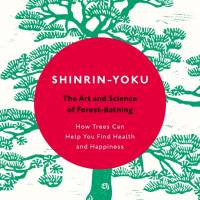While shinrinyoku, or forest bathing, is hardly new to Japanese readers — the term was first coined in the 1980s — it's about to get a lot more currency as "Shinrin-Yoku: The Art and Science of Forest Bathing" is slated for publication in nearly 20 languages.
Shinrin-Yoku: The Art and Science of Forest Bathing, by Qing Li.
320 pages
PENGUIN BOOKS, Nonfiction.
According to Qing Li, a doctor at Nippon Medical School and president of the Japanese Society of Forest Therapy, forest bathing is a cure-all: Time spent with trees can boost the immune system, increase energy, decrease anxiety, depression and anger, reduce stress and bring about a state of relaxation. As Li writes, rather breathlessly, "trees can make you feel richer and younger."
This is a book aimed squarely at the general reader: the science is, frankly, science-lite. As for the art or practice of forest bathing? Li explains that this includes everything from guides who "can help you engage your senses while you are in the woods" to simply taking a stroll in the woods, foraging for food in the forest, doing yoga, tai chi, meditation or even setting up an easel and painting under a canopy of trees. The main thing, Li says, is to engage the five senses and try to stay for at least a couple of hours.
"Shinrin-Yoku" is a beautifully illustrated book, with tree photography appearing on nearly every other page. For readers in Japan there's a detailed guide to the eight shinrinyoku paths of Asakawa Forest in Nagano Prefecture, the spiritual home of forest bathing. In many ways Li's book is a simple and timely reminder: Get out into nature when you can.



















With your current subscription plan you can comment on stories. However, before writing your first comment, please create a display name in the Profile section of your subscriber account page.